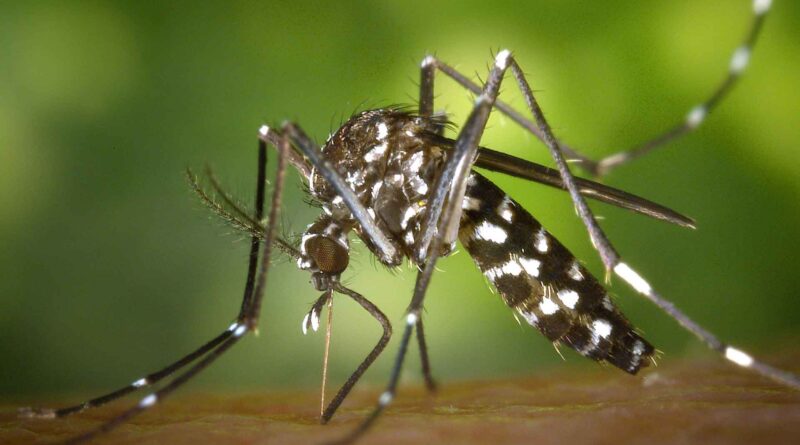Mosquito-borne diseases has threaten World
Rising Risks and Prevention Strategies
The escalating threat of mosquito-borne diseases has threaten world health security, creating a perfect storm of expanding geographical ranges, emerging pathogens, and growing insecticide resistance. These tiny insects now represent one of the most significant threats to global public health, causing millions of deaths annually and imposing substantial economic burdens on healthcare systems worldwide. The combination of climate change, urbanization, and international travel has transformed what were once localized health concerns into genuine global crises that threaten populations far beyond traditional risk areas.
The Expanding Spectrum of Mosquito-Borne Threats
Traditional Killers: Malaria and Dengue
The established mosquito-borne diseases continue to represent massive global health challenges:
Malaria remains one of the world’s deadliest mosquito-borne diseases, with an estimated 247 million cases and 619,000 deaths annually according to World Health Organization data. While concentrated in tropical regions, changing climate patterns are enabling malaria-carrying mosquitoes to establish populations in previously unaffected areas, expanding the threat to new populations.
Dengue fever has shown explosive growth, with incidence increasing 30-fold over the past 50 years. The WHO estimates 100-400 million infections occur annually, with severe dengue now a leading cause of hospitalization and death in many Asian and Latin American countries. The rapid global spread of dengue demonstrates how quickly mosquito-borne diseases can escalate from local concerns to international emergencies.
Emerging and Re-emerging Viral Threats
New and resurgent mosquito-borne diseases continue to emerge:
Zika virus captured global attention in 2015-2016 when its connection to severe birth defects became apparent. The rapid international spread of Zika demonstrated how quickly a previously obscure mosquito-borne disease could become a global health emergency, affecting travel, trade, and reproductive health decisions worldwide.
Chikungunya has expanded from its traditional bases in Africa and Asia to cause significant outbreaks in Europe and the Americas. The virus causes debilitating joint pain that can persist for months or years, creating chronic disability that threatens economic productivity and quality of life.
Yellow fever continues to cause deadly outbreaks despite the existence of an effective vaccine. Limitations in vaccine production and distribution mean this preventable disease still threatens millions in endemic areas and poses risks to unvaccinated travelers.
Factors Driving the Global Expansion
Climate Change and Changing Habitats
The warming climate is fundamentally altering the distribution of mosquito-borne diseases:
Extended transmission seasons: Rising temperatures in many regions prolong the periods when mosquitoes can actively transmit diseases, increasing the annual threat window.
Geographical expansion: Mosquito species that carry dangerous pathogens are establishing populations in new territories, including parts of Europe and North America that previously faced minimal risk from these diseases.
Extreme weather events: Flooding from severe storms creates ideal breeding conditions for mosquitoes, often leading to disease outbreaks in the aftermath of natural disasters.
Urbanization and Human Mobility
Human demographic patterns are accelerating the spread of mosquito-borne diseases:
Megacity proliferation: Dense urban populations with inadequate water storage and waste management create perfect environments for mosquito breeding, particularly for species like Aedes aegypti that preferentially breed in artificial containers.
Global travel networks: Infected travelers can introduce mosquito-borne diseases to new regions within the incubation period, seeding outbreaks in areas with susceptible mosquito populations and non-immune human communities.
Displacement crises: Refugee movements and internal displacement due to conflict or disaster often force people into conditions with limited protection from mosquitoes, creating ideal scenarios for disease transmission.
Biological Adaptations
Mosquitoes and pathogens are evolving in ways that increase the threat:
Insecticide resistance: Widespread resistance to commonly used insecticides has undermined vector control efforts in many regions, making traditional approaches less effective against mosquito-borne diseases.
Behavioral changes: Some mosquito species are adapting their biting times and preferred locations, evading control measures that target their traditional behaviors.
Viral evolution: Pathogens like dengue and chikungunya have developed strains that spread more efficiently or cause more severe disease, increasing their potential to threaten global health.
The Global Impact Beyond Health
Economic Consequences
The threat of mosquito-borne diseases extends far beyond healthcare costs:
Productivity losses: Illness and disability from conditions like malaria and dengue reduce workforce participation and economic output, particularly affecting agricultural and informal sectors in developing countries.
Tourism impacts: Disease outbreaks can devastate local tourism industries, as witnessed in multiple regions during Zika and dengue epidemics.
Healthcare burdens: The direct costs of treating mosquito-borne diseases strain healthcare systems, while prevention and control programs require significant ongoing investment.
Social and Educational Effects
The threat permeates multiple aspects of society:
Educational disruption: Children miss school due to illness or to care for sick family members, creating long-term educational deficits.
Gender disparities: Women often bear disproportionate caregiving burdens when family members fall ill with mosquito-borne diseases, limiting their economic and educational opportunities.
Mental health impacts: The constant threat of disease, particularly for parents in regions with Zika transmission, creates significant psychological stress that receives inadequate attention in public health responses.
Current Global Response and Gaps
Surveillance and Early Warning Systems
Monitoring the threat of mosquito-borne diseases remains challenging:
Inconsistent reporting: Many countries lack robust surveillance systems, leading to underreporting of cases and delayed recognition of outbreaks.
Data integration: Environmental, meteorological, and health data often exist in separate systems, missing opportunities for predictive modeling of disease threats.
Laboratory capacity: Diagnostic capabilities for emerging mosquito-borne diseases remain limited in many regions, hampering rapid response.
Vector Control Strategies
Traditional approaches to controlling mosquito-borne diseases need updating:
Insecticide limitations: With growing resistance, reliance on chemical controls becomes increasingly problematic, requiring new approaches to manage the threat.
Environmental management: Removing mosquito breeding sites remains effective but requires sustained community engagement that proves difficult to maintain.
Biological controls: Methods like Wolbachia-infected mosquitoes show promise but face regulatory hurdles and public acceptance challenges in scaling to the level needed to substantially reduce the global threat.
Vaccine Development and Distribution
Immunization offers hope but presents its own challenges:
Partial protection: The first malaria vaccine (RTS,S) offers modest protection, representing progress but not a complete solution to the threat.
Implementation barriers: Even when vaccines exist, as with yellow fever, production limitations and delivery challenges prevent comprehensive coverage.
Research priorities: Funding for vaccine development for neglected mosquito-borne diseases remains inadequate despite their growing threat to global health.
Individual and Community Protection Strategies
Personal Protective Measures
Individuals can reduce their risk from mosquito-borne diseases:
Effective repellents: EPA-registered insect repellents containing DEET, picaridin, IR3535, or oil of lemon eucalyptus provide reliable protection when used consistently.
Proper clothing: Wearing long sleeves, long pants, and socks—especially during peak mosquito activity hours—creates a physical barrier against bites.
Window and door screens: Well-maintained screens prevent mosquitoes from entering homes, significantly reducing exposure to the threat of mosquito-borne diseases.
Environmental Management
Community-level actions substantially reduce mosquito populations:
Eliminating breeding sites: Regularly emptying, covering, or treating water-holding containers disrupts the mosquito life cycle.
Community clean-up campaigns: Organized efforts to remove trash and containers that collect rainwater can dramatically reduce local mosquito populations and the threat they pose.
Public education: Teaching community members to recognize and eliminate breeding sites creates sustainable protection against mosquito-borne diseases.
The Future Outlook and Emerging Solutions
Technological Innovations
New approaches may help counter the threat of mosquito-borne diseases:
Gene drive technologies: Genetic approaches that spread sterility or disease resistance through mosquito populations offer potential long-term solutions but require careful ethical consideration.
Spatial repellents: New formulations that create mosquito-free zones without requiring direct application to skin could provide broader protection.
Digital surveillance: Mobile technology and artificial intelligence are improving our ability to predict and respond to outbreaks of mosquito-borne diseases.
Integrated Vector Management
A multifaceted approach offers the most promise:
Combining interventions: Using environmental, biological, and chemical methods together provides more sustainable control than any single approach.
Adaptive strategies: Regularly monitoring mosquito populations and resistance patterns allows for timely adjustments to control methods.
Community engagement: Successful programs increasingly recognize that sustainable control of mosquito-borne diseases requires active participation from affected communities.
Climate Resilience Planning
Addressing the root causes of expanding threat:
Predictive modeling: Using climate projections to anticipate where mosquito-borne diseases may emerge next allows proactive implementation of control measures.
Urban planning: Designing cities with mosquito control in mind—through proper drainage, waste management, and building standards—can reduce the future threat.
Agricultural practices: Modifying irrigation and water management in rural areas can minimize mosquito breeding while maintaining food production.
The Role of Global Cooperation
International Health Regulations
Coordinated action is essential against a threat that respects no borders:
Information sharing: Rapid reporting of outbreaks helps neighboring countries implement protective measures before mosquito-borne diseases cross borders.
Resource mobilization: Global funds like The Global Fund to Fight AIDS, Tuberculosis and Malaria have demonstrated how international cooperation can reduce the burden of mosquito-borne diseases.
Research collaboration: No single country can address all aspects of the threat—shared research accelerates progress against these global challenges.
Equity in Protection
Ensuring the response to mosquito-borne diseases doesn’t leave vulnerable populations behind:
Accessible interventions: Control methods must be affordable and practical for the poorest communities, who often face the highest threat from mosquito-borne diseases.
Knowledge dissemination: Health information about prevention and treatment needs to reach all segments of society in culturally appropriate formats.
Community-centered approaches: Programs designed with input from affected communities prove more effective than top-down interventions.
Conclusion: A Call for Sustained Action
The threat posed by mosquito-borne diseases represents one of the most significant and growing challenges to global health. These diseases threaten not just individual health but economic stability, social development, and global health security. While the expanding threat is concerning, it’s not inevitable—proven interventions exist that can reduce transmission and save lives.
Addressing this complex threat requires acknowledging that mosquito-borne diseases are not just health issues but are intimately connected to environmental management, urban planning, climate policy, and economic development. Success will require breaking down silos between different sectors and adopting integrated approaches that address the multiple factors driving the expansion of these diseases.
The growing threat of mosquito-borne diseases demands increased investment in research, strengthened health systems, and renewed commitment to global cooperation. With climate change accelerating the spread of these diseases to new regions, the time for complacency has passed. The choices made today about how to address this threat will determine whether future generations face an escalating crisis or enjoy greater freedom from these ancient scourges.




